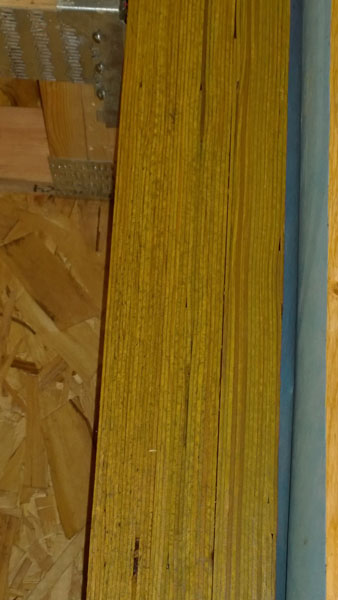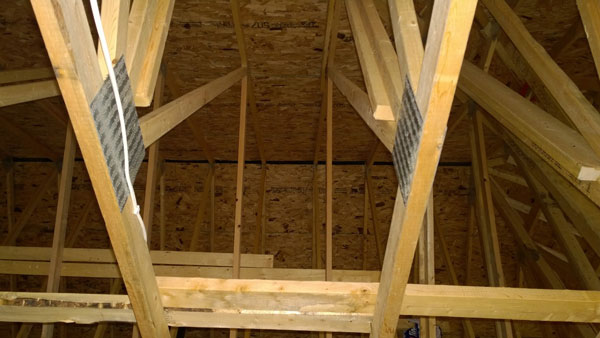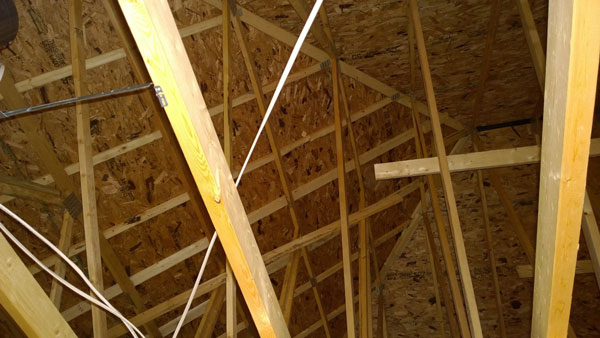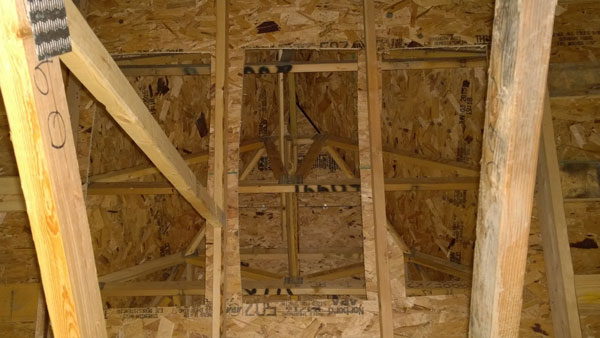
By Jesse A. Heitz
Few issues seem to grip the American fire service quite like our beloved tactic of vertical ventilation. It’s a tool that we’ve kept in our toolbox for generations. It’s something we were all taught about in the academy. It’s truly part of our heritage and culture. However, over the last half decade or so, a tremendous amount of collaborative research has emerged that has greatly developed our scientific understanding of what vertical ventilation does, and what possible consequences could stem from its use.
In the wake of a spate of serious firefighter injuries resulting from vertical ventilation operations, many firefighters across the nation are engaging in discussions regarding the time-tested tactic. These discussions range from simple and informal tailboard dialogues between comrades all the way to formal reevaluations of standard operating procedures/guidelines amongst a fire department’s command staff. Although it’s undoubtedly true that American firefighters are notoriously resistant to change, we’re fairly accommodating to change that results from scientific data. However, we tend to evolve rapidly when tragic issues of firefighter safety arise.
In the last three to four decades, we’ve seen a great evolution in our age-old enemy of fire. The fire environment has changed dramatically, including everything from common residential fire loads to the less-than-robust nature of the structures such fire loads are housed in. Although the occurrence of fire has largely decreased over this period, the rate of firefighter deaths attributable to traumatic fire events within buildings has increased by approximately 67 percent over that same period, according to Underwriters Laboratories. It is here that vertical ventilation finds itself in the middle of a veritable tug of war. Some vertical ventilation proponents argue forcefully that it is a fine tactic and change is unnecessary, whereas some opponents argue with equal force that the tactic should be abandoned outright. Both positions seem quite unreasonable. What has become blatantly apparent is that while vertical ventilation still has an important role in fireground operations, its use comes with new parameters and constraints.
As mentioned earlier, my intent is not to disparage vertical ventilation; it is an incredible tool that fire departments must keep in their toolboxes. Vertical ventilation has served the American fire service quite well. For many large, urban fire departments that often deal with fires in fairly stout Type-III or ordinary construction, vertical ventilation is a necessary and integral part of suppression operations, and it’s a tactic that has proven its value time and time again. However, it cannot be denied that, for many municipalities–particularly rapidly growing suburban towns that are dominated by new buildings of the lightweight construction variety–that vertical ventilation has witnessed an erosion of its significance.
In the last half decade or so, an incredible amount of research has been conducted on the science of fire, notably how our tactics influence fire behavior. This exceptional fire service renaissance has dramatically opened our eyes to precisely how our eternal enemy of fire truly operates. Although the fire service has long held basic tenets about how fire behaves and reacts to stimulus, it is largely only recently that we have been able to apply data and sound scientific principles to such theories.
We now know just how critical controlling a flow path really is. We know that fire and its byproducts almost instinctively want to travel from the high-pressure area of origin toward lower-pressure areas rich in oxygen. By not controlling a single front door, temperatures at such a terminal point in a flow path can increase by nearly 500° Fahrenheit in less than 90 seconds. Perhaps even more important, during the very same timespan the temperature in the fire compartment itself doubles, facilitating a flashover. What makes this so poignant is that for many fire departments, particularly those with personnel limitations, the fire compartment theoretically could have reached flashover at approximately the time the first attack line arrived at the seat of the fire.
Another unusual scientific find is that creating a flow path through any sort of ventilation (whether intentional or not) leads to a decrease in the levels of oxygen in the fire compartment and an increase in the levels of carbon dioxide. Effectively, what we’re beginning to see is that the creation of any sort of flow path not only allows for drastic spikes in temperature, but dramatic falls in oxygen levels, all of which lead to the creation of an environment that is not only untenable for firefighters, but virtually dooms any occupants. With the excellent wealth of knowledge that has become widely available in the past decade, we’ve adopted wonderful tactics or evolutions of standard tactics. Commonplace tactics such as Vent Enter Search (VES) have evolved into Vent Enter Isolate Search (VEIS), while old adages such as “keep it rich” have taken greater meaning with our more advanced understanding of ventilation-limited fires.
TACTICS AND STRUCTURES
While we’ve adapted our ventilation practices, notably vertical ventilation, to work in conjunction with our enhanced knowledge of fire behavior, it appears that, as a whole, the American fire service has been rather slow in applying these principles to lightweight Type-V construction. It is here where vertical ventilation may very well see its use dwindle. Even the most ardent supporters of vertical ventilation must surely have significant reservations about the suitability of such a tactic on lightweight construction.
In the academy, balloon-frame construction was often identified as an almost inherently dangerous construction type. Yet we’ve seen that although such a structure can certainly be treacherous, these structures weren’t necessarily precision-engineered. Although they provided tremendous opportunities for vertical fire spread, they were typically over-built for their size, used solid-sawn lumber of stout dimensions, and used bevies of nails instead of thin-gauge gusset plates or adhesives. All of these construction features typically allow for extended burn times before structural failure. As this particular form of residential construction dominated residential buildings in large swaths of the nation for well over a century, and still heavily populate the downtown areas of many municipalities, vertical ventilation remained an appropriate tactic.
However, it appears that for many fire departments, their standard operating procedures/guidelines, if they exist, don’t often differentiate between a two-story balloon-frame house and a two-story house of lightweight construction. Instead, all construction types or methods are simply lumped together into categories such as “single-family dwellings.” The dangerous implication here is that, with such broad categorizations, the subtle structural nuances of a given building is effectively lost in translation. From there it becomes fairly commonplace that tactics are applied in an almost wholesale manner, and such a practice may very well result in their inappropriate deployment, which could have disastrous consequences.
This unfortunately may very well be the case with lightweight construction. Many firefighters and fire officers arrive on-scene at a working fire in a lightweight construction single-family home and carefully stage a ladder company in a position that facilitates the accomplishment of vertical ventilation. It’s instinctive muscle memory. We’re in the mode that if we show up to a fire in a single-family dwelling, we stretch attack lines to the front door and send firefighters to the roof–standard procedure. However, the application of any broad-brush approach to a fire is a recipe for tragedy, particularly when it comes to lightweight construction.
Lightweight construction is simply something that should not be trusted, and caution should always be exercised when operating on or within them. Although many of the buildings in the modern lightweight construction type feature the latest in detection, prevention, and even suppression technologies, at their core these are precision-engineered buildings that, when exposed to fire conditions, often perform less than admirably. When we combine their less-than-robust nature with the volatility of modern fires, we get an unusually hostile fire that requires a tremendous amount of thought and calculation.
These buildings may feature a variety of different structural elements, with some of them housing durable members such as steel I-beams and columns as well as Laminated Veneer Lumber (LVL) beams to achieve larger interior spans. Yet the very nature of these buildings, as their cost-effective name implies, strive for optimal building material efficiency. Gone are the days of 2 x 6-inch lumber, or even true 2 x 4-inch lumber. Even 16-inch on-center stud spacing is becoming a rarity, often replaced by 24-inch on center spacing. Top-grade lightweight construction sees relatively feeble gusset plates holding roof assemblies together, while many others are held together by tongue-and-groove joints with glue. Structural redundancy and fire-resistance, both of which allow for substantial burn times, is simply not the modus operandi for lightweight construction.
We are well-aware that modern contents alone can create fires capable of reaching flashover in mere minutes, perhaps occurring prior to the arrival of the first-due company. We know that most structural glues fail in the vicinity of 300 to 400° Fahrenheit. We also know that a typical modern 2 x 4-inch timber chars at a rate of 1/40th of an inch per minute, which means that after 15 minutes, 3/8th of an inch of said timber has burned away; this is important because the teeth of the standard gusset plate are only 3/8ths of an inch long. We have assembly systems, notably roof assemblies, that, when one member of the truss system fails, the rest of the assembly follows suit in short order. When we add all of this together, we get an overwhelmingly prevalent building type that is predisposed to early failure under fire conditions.

(1) An LVL beam in a new home of lightweight construction.

(2) A photograph of a typical roof assembly in a modern home of lightweight construction.

(3) A photograph of the framing typically found in the gables of lightweight construction roof assemblies.

(4) A photograph of the lightweight framing commonly found in modern dormers, a frequently used purchase point for personnel conducting vertical ventilation operations.
VERTICAL VENTILATION AND YOUR DEPARTMENT
For many suburban and rural fire departments that are predominantly paid-on-call or volunteer, localities in which the bulk of their built environments may quite possibly be lightweight construction, additional problems arise. Theoretically, we’re looking at structural failure times that can range from five to 15 minutes. A well-trained and well-staffed career department might be able to successfully and safely undertake vertical ventilation operations. However, for many of the aforementioned American fire departments, a first-due engine company, much less a second- or third-due ladder company (or possibly even a mutual-aid ladder company), may not arrive until 10 minutes after the first alarm. When staffing and rapid response time inadequacies are coupled with a lack of familiarity with cooperating companies or units, coordination issues are certain to follow, and we are abundantly aware that effective vertical ventilation requires excellent coordination between attack teams and ventilation teams.
To that effect, a 2010 memo submitted by the International Association of Fire Chiefs regarding firefighter safety and lightweight construction recommended that a defensive strategy be employed when the structural integrity of the building is in doubt. I think we would all agree with such a recommendation. With that in mind, how can we reasonably expect the bulk of the American fire service to safely and effectively use vertical ventilation, primarily with the intent to increase tenability, at fires in lightweight buildings?
References
DeCrane, Sean. “Lightweight Residential Construction: Collaboration Adds to Firefighter Safety.” Www.fireengineering.com. Fire Engineering, 9 Aug. 2010. Web.
Fire Load Performance Characteristics of Metal Gusset Plate Trusses vs. Finger Joint Glued Trusses. Tech. Tampa: Bracken Engineering, 2012. Print.
Firefighter Safety and Lightweight Construction. Issue brief. Fairfax: International Association of Fire Chiefs, 2010. Print.
Hartin, Ed. “UL Vertical Ventilation Study Tactical Implications.” Weblog post. Cfbt-us.com. Compartment Fire Behavior Training- US, 2013. Web.
Interrupting the Flow Path. Tech. Northbrook: Underwriters Laboratories, 2014. Print.
Kerber, Steve, and Todd Harms. “Considerations for Safe, Effective, and Coordinated Vertical Ventilation.” FireRescue Apr. 2012: n. pag. Web.
Kerber, Steve. Impact of Ventilation on Fire Behavior in Legacy and Contemporary Residential Construction. Rep. Northbrook: Underwriters Laboratories, 2010. Print.
Madrzykowski, Daniel N. Enhanced Effectiveness of Fire Fighting Tactics Project. Issue brief. Gaithersburg: National Institute for Standards and Technology, 2011. Print.
Norwood, P. J., and Frank Ricci. “Ventilation-Limited Fire: Keeping It Rich and Other Tactics Based off Science.” Www.fireengineering.com. Fire Engineering, 24 Jan. 2014. Web.
Jesse A. Heitz is a firefighter and policy writer with the Chaska (MN) Fire Department. He has been with the department since 2012, and served as the training officer for the Carver County (MN) Fire Departments’ Hazardous Materials Response Group from 2014 to 2015. He obtained his bachelor’s degree in history from the University of St. Thomas in 2010, a master’s degree in War in the Modern World from King’s College London in 2014, and is in the final months of a postgraduate degree in building history from the University of Cambridge. He will begin studying for a Ph.D. in Modern History from the University of St. Andrews.

